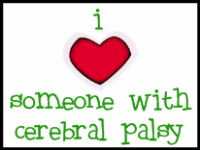Let it never be said that households with a disabled child in the family aren't busy . . . B U S Y! This morning our energy burners were on high as Sarah, her Daddy, and Grandma were off to the neurologist for light anesthesia first, followed by injections of Botox (Bolulinum toxin) in select spots in Sarah's feet and calves to treat focal spasticity. Spasticity means a state of increased muscle tone and heightened deep tendon reflexes such that Sarah's legs, for example, feel tight and rigid. Her knee jerk and foot reflexes are also exaggerated. Research shows that Botox helps improve motor control and functional movement patterns in children with cerebral palsy (CP) by permanently blocking the release of an important chemical, acetylcholine. It does this at the point where the nerve joins a muscle, thus preventing it from contracting. This blockage is irreversible and the affected muscle atrophies (or "dies"). The result is functional recovery in patients -- or the better use of their limbs -- within a few months, especially when used with and followed by intensive physical therapy.
Through intensive exercises, our hope is to use to the maximum all of Sarah's existing abilities linked to her motor performance to create positive --and permanent! -- changes in her overall neurological, skeletal, and muscle systems. And we'll be starting soon. Gosh, we love this little girl! What a trooper! Already she's a diva whose wonderful in-home therapists have worked with her to optimize her health and well-being using a variety of innovative pediatric PT exercises or training programs. In a strict sense, these will not heal or change the damaged structures in her brain. Nonetheless, her body can respond to exercise in exactly the same way as that of an individual without CP. Moreover, the brain is constantly reorganizing structurally and functionally in response to input and injury. What does this means? It means that early intervention for children like Sarah can promote the development of alternative pathways in the areas of the brain that control muscle coordination and movement. Most plasticity occurs before age 3 years, and Sarah is now 2-1/2 years old.
Below is an informative video from the American Association of Intensive Pediatric Physical Therapy that is an excellent source of information and research for parents of disabled children.
Promoting alternative brain pathways to enhance motor skills such as mobility and critical self-care ability is only one area of current interest to researchers. Other areas include how to repair or replace non-functioning or injured brain cells and cell-cell connectors (the "wiring" system), how to expand and sustain regeneration of brain cells, and how to promote stem cell population in the right place at the right time. (Stem cells are so-called "primitive" cells that can develop into any cell line and exist in human brains throughout life.) But writing more about that is a post for another day, and probably by Sarah's Daddy, as he's the family expert as we explore pursuing stem cell therapy too.
Subscribe to:
Post Comments (Atom)











1 comments:
Just stumbled upon your blog and have enjoyed reading bits and pieces of it. As a pediatric physical therapist, I gain extensive amounts of knowledge by reading blogs by mothers like you. It helps to provide perspective on what goes on in the home when a therapist is not there. Look forward to reading about your daughter's continued successes. Seems like you are certainly doing all that you can to support her!
Post a Comment